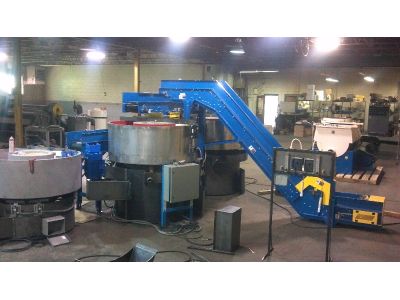The Function of Media in Vibratory Finishing Machines

Tags: Vibratory Finishing Machines
When selecting a media for your vibratory finishing process, you must understand that it will determine the surface quality of the completed part. Larger media, for example, help impinge or impact the parts, which helps with deburring. Smaller media, on the other hand, will cushion the parts more which are ideal for smoothing processes. Then with abrasive, the more aggressive is good for deburring, and with less aggressive is ideal for smoothing, pre-plate, or prepping for polished finishes. As a critical element in the vibratory finishing process, it’s important to understand the nuances involved with media selection. In this post, we’re going to look at the function of media, how it works and what you should expect.
1. Simplifies the finishing process
During the vibratory finishing process, it’s not uncommon for media to become lodged in your parts. The best way to avoid this is to select the right size and shape for your media. Try to select media that is small enough to reach all of your parts’ edges but large enough to avoid becoming stuck in their crevices. The multitude of shapes and sizes are available for this exact reason. If you need help selecting media then send parts into us for a free evaluation.
2. Cushion parts to prevent damage
Inside the vibratory finishing machine, parts and media are distributed randomly. Having the correct amount of media for the job can help to cushion the parts and prevent damage due to collision. So the greater the media to parts ratio the more work is done on the parts and the more they are cushioned which protects against impingement. So parts do not require a high media to parts ratio since they cannot be damaged. Lastly, if the machine has internal separation then the media to parts ratio is usually at a 4 to 1 minimum to help push the parts out of the machine during unload.
3. Produces cuts, deburrs and polishes
Abrasive media is designed for an aggressive finish where it is necessary to cut or remove material. Non-abrasive media should be utilized when cutting isn’t required and only part polishing is desired.
4. Contacts different edges
By selecting the right media shape, you can ensure that all of your parts’ edges are finished properly. For example, conical media is capable of finishing areas of your part that tetrahedron media may not be able to reach.
5. Streamlines the separation process
When you use the correct media for your application, the separation process is much easier. The best media for the job is typically one that quickly separates itself from your parts, greatest difference in size, when they are removed from your finisher’s bowl.


